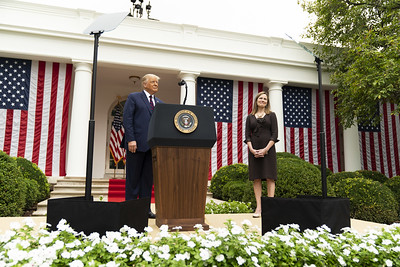Electoral College guide
The breakdown of what the Electoral College is and what it means for the upcoming election.
The Electoral College is one of the key components of the Presidential Election of the United States of America. It is a controversial and confusing topic. The Electoral College forms every four years for the sole purpose of electing the President and Vice President. Something so important to our election and people don’t even understand it.
The Electoral College was established in the Constitution, in part, as a compromise between the election of the President by a vote in Congress and the election of the President by a popular vote of qualified citizens. The Electoral College consists of 538 electors and 270 electors are needed to become president. No Senator or Representative, or person holding office can be appointed as an elector. Each state electors are chosen in a two-part process, first by the political parties of each state who choose slates of potential electors before the general election. Then voters in each State cast votes for the Presidential candidate of their choice; they are really voting to select their State’s electors. Except in Nebraska and Maine which have a proportional distribution of the electors. In Nebraska and Maine, the State winner receives two electors and the winner of each congressional district (who may be the same as the overall winner or a different candidate) receives one elector. This system permits Nebraska and Maine to award electors to more than one candidate.
After Election day the states use the general election results to appoint their electors, The winning candidate’s State political party selects the individuals who will be the electors. From Mid-November through December 14, 2020, each governor must prepare seven Certificates of Ascertainment, and one of them is sent to the archivist. The certificates are the link between the popular and the vote of the electors. This year the electors officially vote on December 14, 2020, when they meet in their respective states and vote for president and vice-president. The votes of the electors are recorded on the certificates of Vote, which are then paired with the six certificates of ascertainment, and that creates a set of electoral votes for each state. After that, the electoral votes must be received by the president of the senate (Current Vice-president) and the archivist no later than nine days after the meeting of electors. Once that happens the archivist transfers the certificates to congress to be counted.
On January 6, 2021, Congress meets in a joint session to count the electoral votes, The President of the Senate presides over the count and announces the results, objections can be made to the electoral votes. If no presidential candidate receives at least 270 electoral votes, then under the 12th amendment the House of Representatives will decide the Presidential election. For the Vice-president if they do not receive at least 270 electors then under the 12th amendment the senate elects the Vice-President. Then after results are agreed upon the President-elect and Vice President-elect would then take the Oath of Office on Inauguration day and become the President of the United States and Vice President of the United States. Don’t forget that your vote always counts as it helps determine your state’s electors, If you can vote, do it, for it is your right as a US citizen.
Alfred Dozier is a junior and this is his second year on the newspaper staff as the Opinion and Editorial editor. He enjoys reading, writing and playing...








